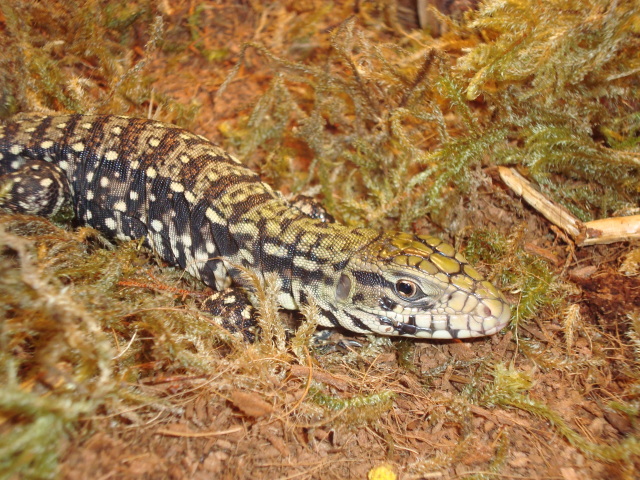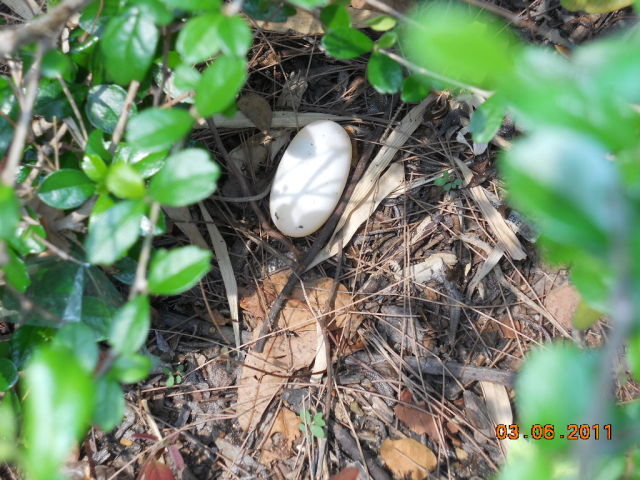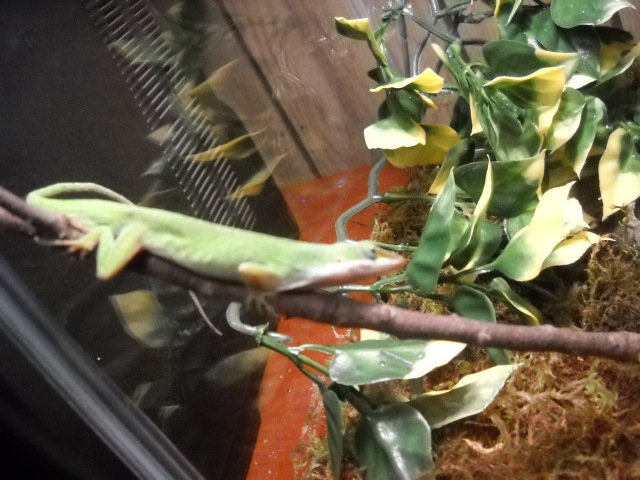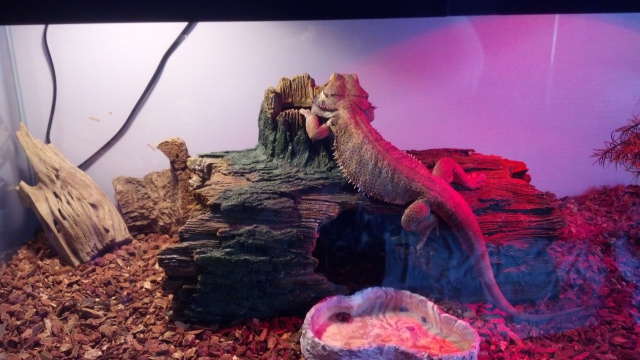QuestionHello, I breed my own Leopard Geckos and I currently use All Living Things brand of white Calcium Sand for a substrate for my three females that are in a 40 gallon reptile tank. I recently got a new tank that is the same size and I am debating on the substrate. I have never had any problems with the calcium sand that I am using now. It is not super fine and is about 1/5th to 1/8th of the size of aquarium gravel. My Geckos have never had a problem with it and seem to like the texture of it. In my new tank though, I have been thinking of putting Zilla's Desert Blend Ground English Walnut Shells. I know that there is crushed walnut shells out there that have sharp edges and that are much larger. The Ground walnut shell substrate that I am looking at using is fine and much smaller than the calcium sand I am using.
I wanted to know your perspective on what I should use. I don't like the look of slate or tile in the bigger terrariums just because i feel it takes away from the effect of the big open space for them to explore on and i feel that loose substrate would be much more comfortable than hard tile. Plus when they are gravid they wont have anywhere but a hide-box to dig around in. I feel that it gives the leopard gecko more freedom to dig around all over the cage and choose where to lay her eggs verses just giving her one option. I do use Repti-Carpet for the two ten gallon tanks I have for the hatchlings and the male to have a home in, though.
But anyways, I have heard a lot of debate about the bacteria buildup in the Ground Walnut Shell, as well as impactation, and eye problems. Now it seems like a lot of people see walnut shells and automatically thing crushed big pieces. This is not the case, what I will be using is the sand-like, Ground Walnut Shells.
Thank you for everything in advance!
-Josef
AnswerHi Josef,
Substrate choice has to be one of the most discussed and controversial topics in reptile keeping.
I'll preface the discussion by saying that any loose particle substrate presents an impaction risk in addition to dust and bacteria/parasite/fungal contamination. From a pure safety standpoint newspaper and similar will always win out but substrate decisions are also made based on aesthetics, perceived preference by the reptile and our own preference and convenience.
The negative feedback from vets came rather quickly when calcium sand first started showing up as the culprit in necropsies. The same happened for crushed walnut and that has muddied the waters when trying to assess the safety of ground walnut. The plain truth is that reptile keepers often do not seek veterinary treatment or follow up with necropsies on deceased animals. That means that the cases and causes of impaction are vastly under-reported making it hard to make a fully informed decision.
My main concern with the ground walnut would be the consistency. It may feel like sand but keep in mind that natural sand is created through erosion which rounds out the particles. Walnut shells are mechanically ground and although small the particles are still sharp. The negative affect may not be immediately obvious but rather slow and cumulative.
Very few reptiles live on and are adapted to loose, deep, beach type sand but rather live on hard pack, a firm surface with just a thin layer of loose particles on top. I think that a slate/tile floor with sand filling in the gaps and lightly on top comes close to mimicing their natural environment.
Gravid females often seek out a slightly moist/humid area for laying. I would suggest a separate and contained area of loose substrate in one end of the tank to serve this purpose and for any other digging behaviour. That will reduce the incidence of feeding over the sand/walnut which is what most often leads to ingestion.

 Female beardie
Question
Igor
Hi there,
Can it be detrimental for my fe
Female beardie
Question
Igor
Hi there,
Can it be detrimental for my fe
 MY TEGU
QuestionQUESTION: My tegu Bubby has a slightly swollen
MY TEGU
QuestionQUESTION: My tegu Bubby has a slightly swollen
 Snake egg identification
Question
Snake Egg
This egg was found in the American E
Snake egg identification
Question
Snake Egg
This egg was found in the American E
 My green anole is dehydrated
QuestionQUESTION: i just sent u a message before i cont
My green anole is dehydrated
QuestionQUESTION: i just sent u a message before i cont
 Hypovitaminosis A
QuestionQUESTION: I need help! I have a bearded dragon
Hypovitaminosis A
QuestionQUESTION: I need help! I have a bearded dragon